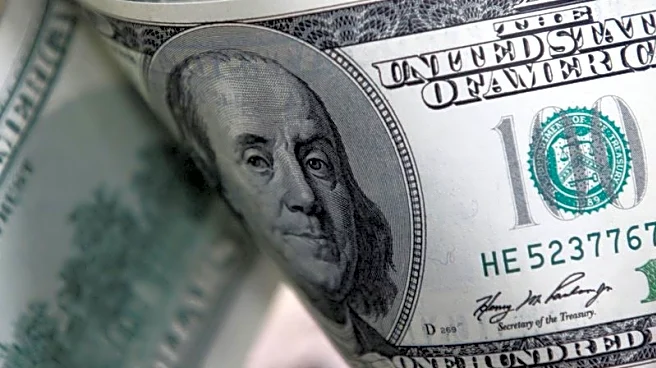What's Happening?
The U.S. dollar fell sharply against major currencies following the release of disappointing jobs data. The Labor Department reported that nonfarm payrolls increased by only 22,000 jobs last month, far below the expected 75,000. This has heightened expectations for a Federal Reserve interest rate cut, with traders pricing in a high probability of a rate reduction at the Fed's next meeting. The dollar weakened 0.99% against the Japanese yen and Swiss franc, while the euro and pound gained against the dollar. U.S. Treasury yields also fell, reflecting market anticipation of monetary easing.
Why It's Important?
The weaker-than-expected jobs data and subsequent fall in the dollar underscore concerns about the U.S. economy's health and the potential for stagflation. A Federal Reserve rate cut could lower borrowing costs and stimulate economic activity, but it may also signal deeper economic issues. The dollar's decline impacts international trade and investment, as it affects the competitiveness of U.S. exports and the value of foreign investments in the U.S. Additionally, the rise in gold prices to a record high reflects investor uncertainty and a shift towards safe-haven assets.
What's Next?
The Federal Reserve's upcoming meeting will be crucial in determining the direction of U.S. monetary policy. Market participants will be closely monitoring any signals from the Fed regarding interest rate adjustments. The broader economic implications of the jobs data may prompt discussions on fiscal policy measures to support growth and employment. Investors will continue to assess the impact of currency fluctuations on global markets and trade dynamics.












